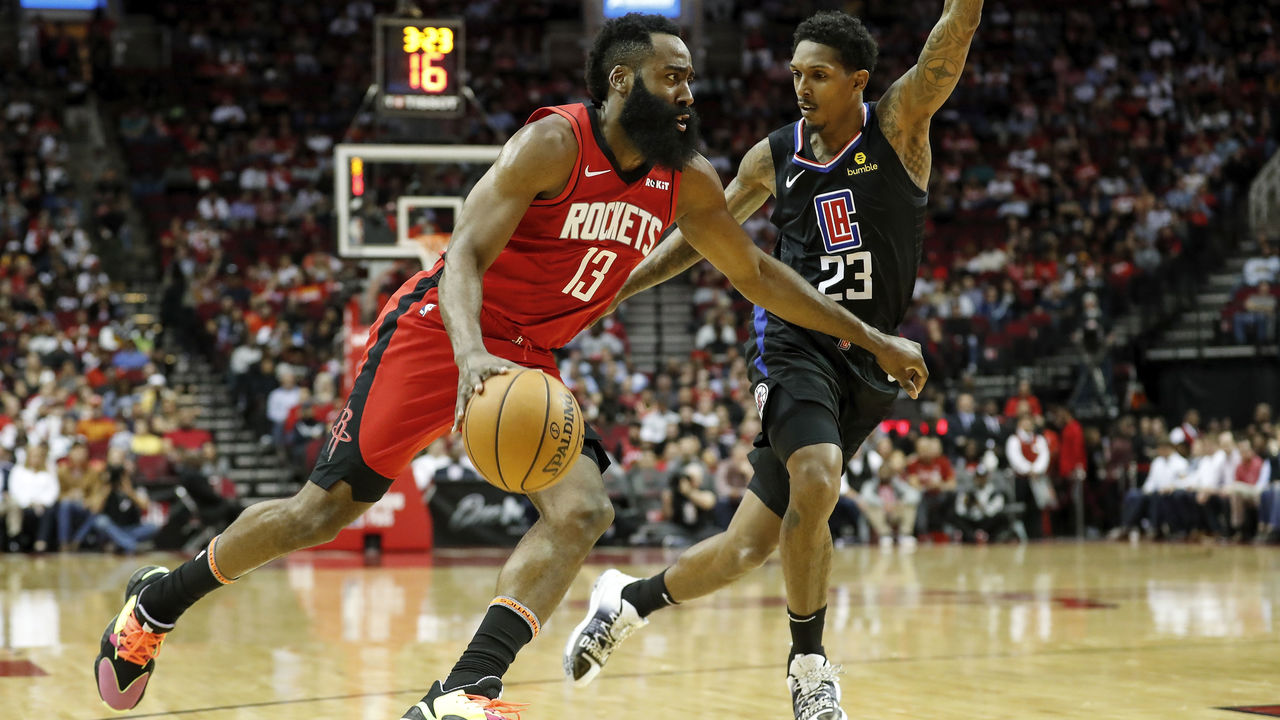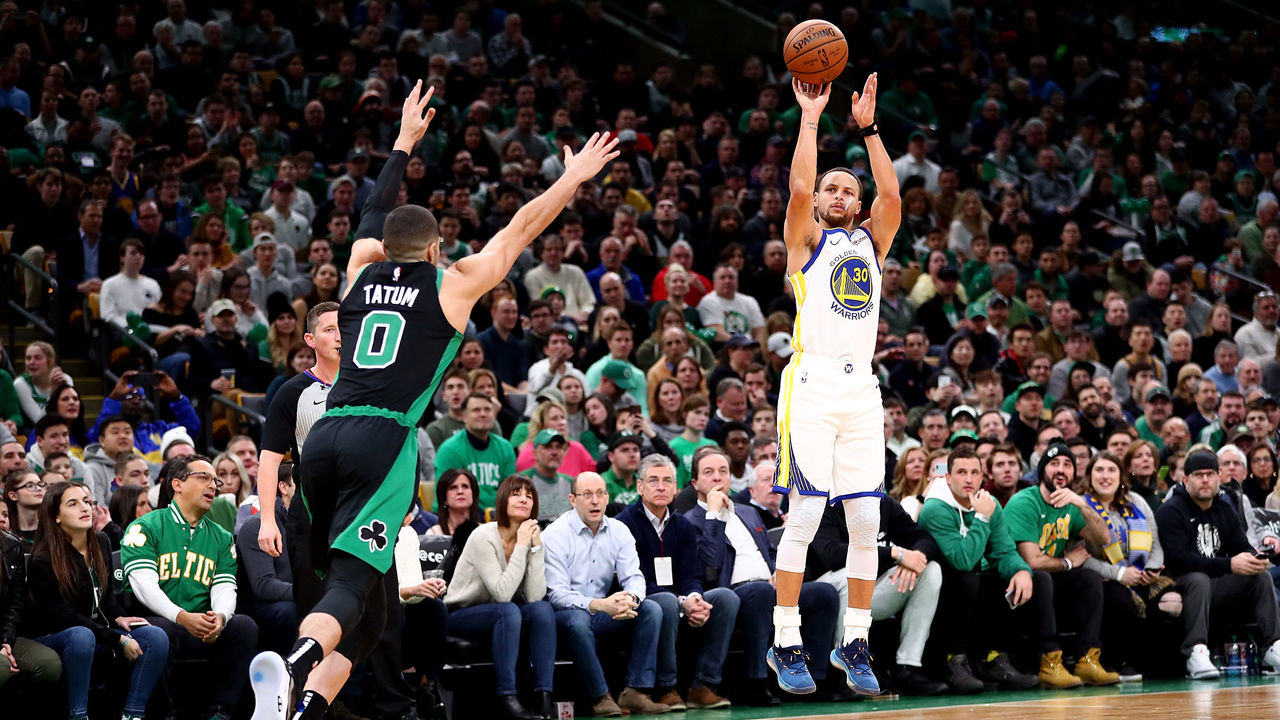Forget the 5 positions: Inside a new way to classify NBA players
Back in November, as has been his wont throughout his NBA career, Danny Green squared up in the corner against the Mavericks and let fly a buzzer-beater that found mesh and forced overtime. As Green slapped hands with Lakers teammate LeBron James, the passer on the play, Sam Kalman took his eyes off the telecast in a Pittsburgh hotel and turned to his friend and roommate for the night, Jonathan Bosch.
"That's our 3-point shooting guard!" Kalman said.
If such a reaction seems oddly specific, that's basically the point. Kalman was encapsulating the precise role that Green has fulfilled over the years for elite Spurs, Raptors, and Lakers teams - and a role Green would inhabit in the future he imagines for the game.
Bosch and Kalman are university juniors at Syracuse and Purdue, respectively. Kalman is a student manager for the Boilermakers men's basketball team, and both men aspire to someday work in analytics in the NBA. But while they love the sport, they aren't enamored with all of its organizing principles, which led them, at an earlier point of this shuttered season, to research and propose a radical method by which to classify every player in the league.
Ditch and forget the standard five-position model, from point guard through center, they suggest, and instead lump players into one of nine clusters.

The NBA, it's been widely noted, has shifted of late toward a state of positional hybridism. LeBron flits between lead ball-handler, wing, and small-ball big. Occasionally, he plays the same position, power forward, as lithe Jayson Tatum, bruising Domantas Sabonis, and the inimitable Giannis Antetokounmpo. The Rockets deploy 6-foot-5 P.J. Tucker at what's considered the five-spot. Anthony Davis has made All-NBA teams at forward and center, but does either label adequately describe his style, responsibilities, or impact?
Not really, Bosch and Kalman would counter. The five-position spectrum can be reduced, primitively, to ordering teammates by height, or to categorizing in the same slot of opposing lineups two players whose games aren't similar. Neither result is ideal.
"Ben Simmons, we've never seen someone who does what he does," Bosch said in a recent interview. "He doesn't shoot threes at all, but he's a ball-dominant player and he's 6-foot-10. We don't think that saying him and Kemba Walker (are) point guards means they have the same role on the court. They just don't.
"I don't think that our nine positions are the most perfect model to group similar players together," he continued. "But it's a lot better than the five positions. What we saw was that roles were much better explained."

Without more ado, here are the nine redefined roles that Bosch and Kalman presented at the 2020 Sloan Sports Analytics Conference in Boston in March.
| Role | Description |
|---|---|
| Floor general | Shorter‚ pass-first player who shoots relatively infrequently |
| High-usage guard | Can pass but often shoots‚ though not with maximal efficiency |
| Ball-dominant scorer | Efficient go-to scorer‚ especially off drives‚ who also distributes |
| 3-point shooting guard | Deadeye catch-and-shooter who rarely initiates plays |
| Stretch forward | Taller 3-point threat who grabs some rebounds |
| Skilled forward | Better rebounder who can drive and shoot threes off the catch |
| Versatile role player | Regardless of height‚ average player in most statistical categories |
| Mid-range big | Good defensive rebounder who'll take jumpers inside the arc |
| Traditional center | Strong rebounder and rim-protector who rarely strays outside |
Bosch and Kalman generated these archetypes by analyzing, from the NBA's 10 most recent full seasons (2010-19), the distribution of nearly two dozen stats that reflect players' habits, opportunities, and performance. (These stats include points and turnovers per 100 possessions; usage, assist, rebound, steal, and block rates; and field-goal attempts and shooting percentages from various spots on the floor.) Although rare outliers exist, most players, Bosch and Kalman found, fit snugly in one of the nine distinct clusters they discerned.
The clusters, they believe, describe with greater accuracy and detail what players actually do and accomplish on the court. Ball-dominant scorers - LeBron, James Harden, Kawhi Leonard - run the show and create offense more efficiently than high-usage guards such as, say, Lou Williams. Pinpoint marksman JJ Redick, who doesn't often turn the ball over or hit the offensive glass, is an exemplary 3-point shooting guard. The eye test is enough to know that Davis doesn't play like DeAndre Jordan; calling one big man a skilled forward and the other a traditional center codifies that contrast.

The ultimate point that Bosch and Kalman seek to make is this: NBA teams could trot out optimally constructed lineups by considering how these nine player types intersect. By mixing and matching the clusters in the course of their research, Bosch and Kalman calculated predicted net ratings for millions of hypothetical five-man units, accounting for the myriad approaches that front offices and coaching staffs could adopt as they build around their best players.
Some takeaways from this exercise:
Great lineups tend to feature, in part, a ball-dominant scorer surrounded by outside shooters, be they 3-point shooting guards, stretch forwards, or skilled forwards. Efficiency from a team's high-usage player is paramount to winning, as is spacing the floor around him.
An instructive real-world example is the Kevin Durant-era Warriors' "Death Lineup," whose net rating of 12.4 ranked high among predicted outcomes. In this unit, Durant and Steph Curry doubled up on ball-dominant scoring, Klay Thompson was the resident 3-point shooting guard, and Draymond Green and Andre Iguodala filled in blanks as apex versatile role players.
The worst hypothetical lineup Bosch and Kalman studied rode a fatal lack of efficient scoring and spacing to a net rating of around minus-10.5. The breakdown: 0.25 floor generals, 2 high-usage guards, 0.5 skilled forwards, and 2.25 versatile role players.
Bosch and Kalman's research emerged from conversations they had at a two-month Carnegie Mellon University sports analytics program last summer with Atlanta Hawks data scientist (and school alumnus) Maksim Horowitz. They've presented their findings to basketball thinkers at a few analytics conferences, including last fall at Carnegie Mellon in Pittsburgh - their vantage point for Green's key 3-pointer against the Mavs - and in March at MIT Sloan, the weekend before the NBA (and, pertinently for Kalman, Purdue's basketball season) hit the brakes.
At Sloan, the annual symposium co-chaired by Rockets general manager Daryl Morey, Bosch and Kalman won an audience choice award - former Kings coach Dave Joerger, Kalman recalled, was in attendance and told one of Bosch's professors that he enjoyed their presentation - and they received some insightful feedback. To wit: Because rebounds, steals, and blocks are the only defensive stats they measured, the clusters don't account much for individual defensive ability and tendencies, a limitation that advanced metrics and player tracking data could help address.

Another line of inquiry they'd like to pursue is splitting the 10-season span they studied into smaller segments to test the validity of a surprising conclusion. The single best hypothetical lineup that Bosch and Kalman identified included a traditional center, suggesting that bigs who can't shoot are still valuable if they protect the rim and snag offensive boards. Does that hold true today, or do those traditional centers only appear important on paper because of data from the stylistically archaic early 2010s?
Just as players can move between clusters over time - picture Kawhi blossoming from complementary stretch forward to ball-dominant scorer, or Brook Lopez's newfound 3-point range spurring his shift from mid-range big to skilled forward - the clusters themselves are subject to evolution. "These nine aren't set in stone," Kalman said. The idea is that they'll change as basketball does, adapting as necessary to comprehensively explain the product where conventional thinking hasn't.
"It's cool to be mindful of what we did and how (the cluster approach) can contribute to real life - how we can see it play out in NBA games," Kalman said. He added one caveat: "When we did have the NBA."
A 'clustered' All-NBA team
Late May is typically the time of year when All-NBA teams are announced. In this spirit and at theScore's request, Bosch selected a nine-man first team for the 2019-20 season - the top player at each of his and Kalman's clusters.
Two quick notes on Bosch's team: He chose players based on their 2019-20 performance but using cluster assignments from 2018-19, the most recent complete NBA season and the latest one tracked in his and Kalman's research. He also took care to note that Antetokounmpo warrants an honorable mention at ball-dominant scorer.
| Role | Player |
|---|---|
| Floor general | Kyle Lowry‚ Raptors |
| High-usage guard | Bradley Beal‚ Wizards |
| Ball-dominant scorer | LeBron James‚ Lakers |
| 3-point shooting guard | Jayson Tatum‚ Celtics |
| Stretch forward | Davis Bertans‚ Wizards |
| Skilled forward | Anthony Davis‚ Lakers |
| Versatile role player | Bam Adebayo‚ Heat |
| Mid-range big | DeAndre Ayton‚ Suns |
| Traditional center | Rudy Gobert‚ Jazz |
Nick Faris is a features writer at theScore.